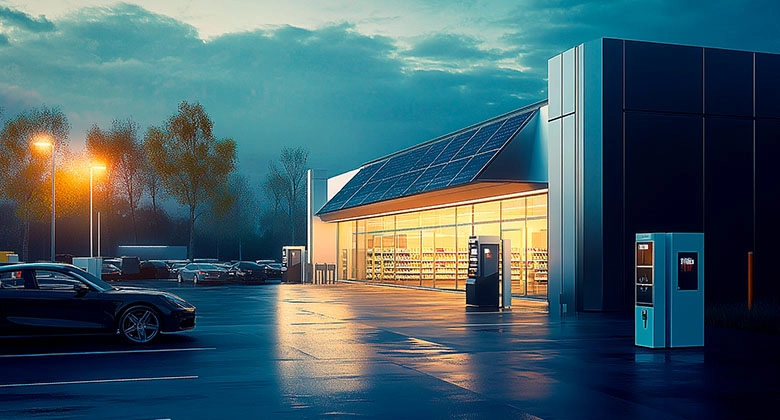

While the roofs of shopping centers quietly gather gravel or simply collect dust under the sun, entrepreneurs elsewhere are turning those same square meters into a stream of revenue. That’s right — we’re talking about solar panels. And if you manage a mall or own commercial property, this idea could be a real game-changer. Especially now, with electricity costs rising and businesses under pressure to adopt energy-efficient practices.
Energy from the sky — an investment that works every single day
Let’s look at an example: a rooftop area of 3,000 m² can typically hold up to 500 solar panels. That’s around 200 kW of installed capacity. This kind of system is easy to scale — whether for your own use or for lease. Some shopping center owners already use solar installations not just to power lighting and ventilation but to feed electricity back into the grid under a "green tariff."
For those just starting to consider this path, it’s essential to get professional advice and the right equipment. You’ll need to assess not only the area and pitch of the roof but also weight distribution, ventilation, and safety.
And it all begins with the basics — equipment. For example, buying solar panels for shopping centers and stores is already half the battle. High-quality photovoltaic modules can last 25 years or more, especially when sourced from a reputable manufacturer and installed by skilled professionals.
Why businesses should consider solar power
Energy independence is a compelling argument. No more worrying about power outages, rising rates, or peak load charges. Solar panels turn your business into a self-sufficient system — one where you’re in control.
There’s also the environmental aspect. More and more tenants and customers are choosing spaces that show a commitment to sustainability. A solar power plant on the roof is a bold statement: we care about the future.
Here are some of the top advantages:
- Reduced electricity costs
- The ability to sell surplus energy
- Increased property value
- Enhanced business image
- Attracting ESG-conscious tenants
But that’s not all. A solar power system needs a reliable “brain” — the inverter. It converts the current from your panels into usable energy. That’s why a budget-friendly solar inverter in Khmelnytskyi can be just as important as the panels themselves.
When your rooftop starts making money
A mall with a solar power station doesn’t just save money — it generates profit. During sunny months, such a system can produce a significant energy surplus. For instance, in summer, you could cover up to 80–90% of a shopping center’s total electricity needs. With proper setup and monitoring, a solar plant becomes a stable, predictable source of income.
You can even lease energy to tenants or offer EV charging stations to customers. All of this boosts your center’s image and market appeal.
Ukrainian businesses are increasingly turning toward sustainable solutions. Using a rooftop is no longer just an overhead expense — it’s a strategic investment that pays off over time and delivers real value every day.
Who’s already doing this in Ukraine
In western Ukraine — cities like Lutsk and Lviv — malls are already running on solar. Projects in Odesa and Kyiv have systems that power lighting, air conditioning, and even escalators.
In Poltava, for example, one shopping center converted its roof into a solar station and cut external power usage by nearly 60%.
These are not future fantasies — they’re real projects working today in Ukraine.
How to get started
Turning your roof into a source of income takes just three steps:
- Inspect the roof for suitability (angle, shade, condition of the surface)
- Order a custom project and select the right equipment
- Install and launch the system — it usually 10-15 weeks
From there, the sun does the work.
And even if you don’t yet own large commercial property, consider compact solutions. For example, a budget-friendly solar panel for a balcony in Ukraine is a smart starting point for anyone looking to save money and gain energy independence — even in an apartment. After all, sustainable progress begins with small steps.

